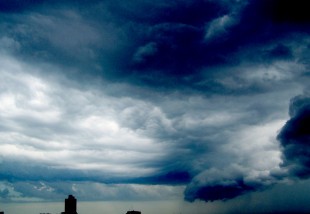Articles
How Superstorm Sandy helps us think closer to home
Tweet
London and New York are used to being compared to one another. The global cities share many traits, and our friendly rivalry has driven innovation on both sides of the Atlantic. Our sympathies go out to the people in all areas affected by Superstorm Sandy and as they start to count the costs, the London Climate Change Partnership is inevitably looking at the damage done to New York, and thinking about how London would measure up to such a challenge.
New York’s climate is typically more extreme than London’s (they have warmer summers and colder winters), but they also have experienced more extreme events recently and so we have found it useful for London to learn about how the city copes with these impacts. But even so, London still suffers disruption from extreme weather events, particularly to its transport system, and this is an area we must continue to work to improve.
Not every extreme weather event can be attributed to climate change: some extreme weather events may have happened anyway. But we do know that climate change is increasing the frequency and intensity of extreme weather events. With at least $50 billion in economic losses and $20 billion in insured losses estimated from Superstorm Sandy, this is an event that will have impacts world-wide. As climate change causes an increasing number of extreme weather events globally, business in London will be affected financially.
London’s climate is different to New York’s. We are very unlikely to experience hurricanes, however we do expect to see an increase in the frequency and intensity of extreme weather, including storms, as our climate changes. Increases in storm surges are uncertain but are considered unlikely to increase in size.
London has been dealing with (and preparing for) the issue of tidal flooding for many years; in 1928, 14 people died in London and thousands lost their homes when a sudden snow thaw, combined with unusually heavy rain, coincided with a high spring tide and a storm surge caused by a major extratropical cyclone in the North Sea. The storm surge raised the water levels in the Thames Estuary, measured at Southend, to 1.5 metres (4 ft) above normal. Together with the disastrous flooding of 1953 from a storm tide in the North Sea which killed 307 people in England alone, this contributed to the decision to build the Thames Barrier, which still protects London today from tidal surge.
London is currently well protected from tidal flooding by the Thames barrier, and the Environment Agency has been working with stakeholders on a plan to prepare it for future sea level rise up to 2100. However, tidal flooding isn’t the only threat that London could face – it faces higher risks of flash flooding from heavy rainfall, which may produce many of the same effects that caused New York problems, such as flooding of hospitals or underground tunnels. The Mayor of London has been working with the London Boroughs on a project called ‘Drain London’ to map and manage this risk so that we can better prepare ourselves.
With rising seas and changing climates, cities like New York and London face significant challenges. So what can we learn from New York? A similar event to Storm Sandy is very unlikely in London, but we can benefit from learning about the real damages and successes. We can make London more resilient by asking where New York’s preparedness saved lives and protected property, and where they needed to do more.
We have collaborated with New York (and other world cities) for many years and we want to work with them now to understand what roles community response, the protection of critical infrastructure and existing urban green space played in its ability to weather the storm. LCCP recognises that it is important that at all levels of government in London we learn from the impacts in New York and use this information to improve London’s resilience.
London has benefited from its partnership working on climate change: for over a decade our partnership has exchanged learning with other world cities to strengthen London’s resilience. It has also enabled cross-sectoral working at the city level on these issues, which is a vital component.
At this current time however, our thoughts are with the people of New York, and elsewhere in North America and the Caribbean, as they recover from this devastating storm.
Leave a Reply